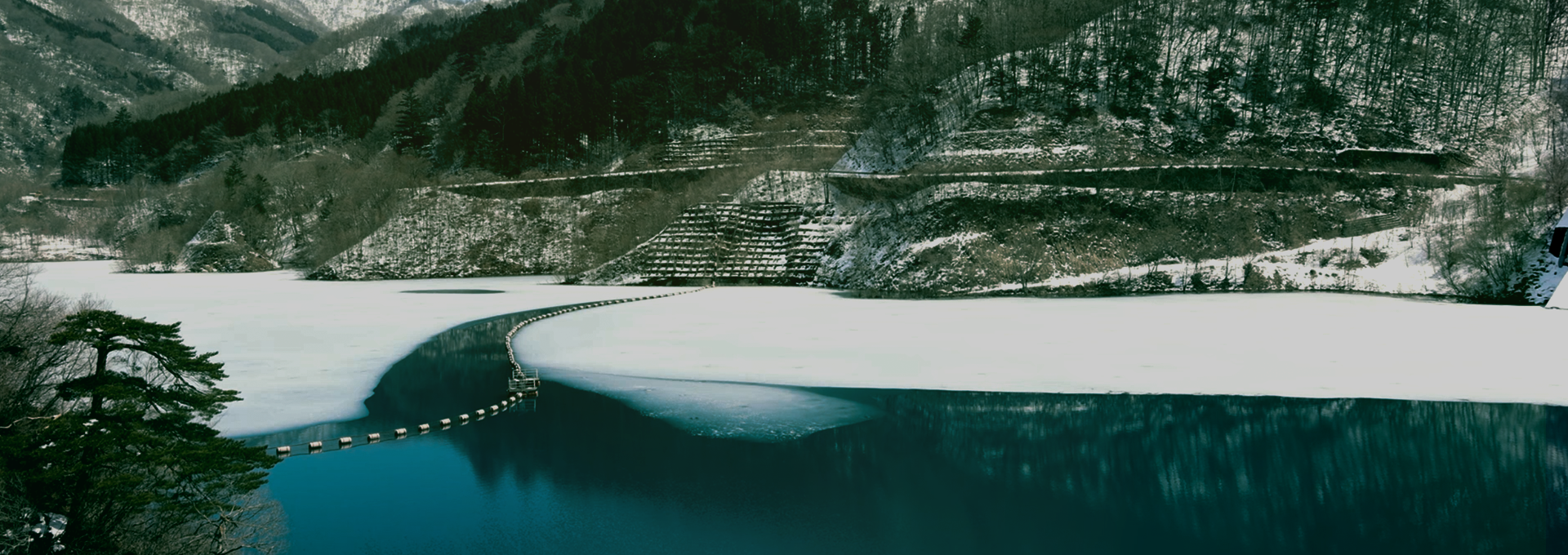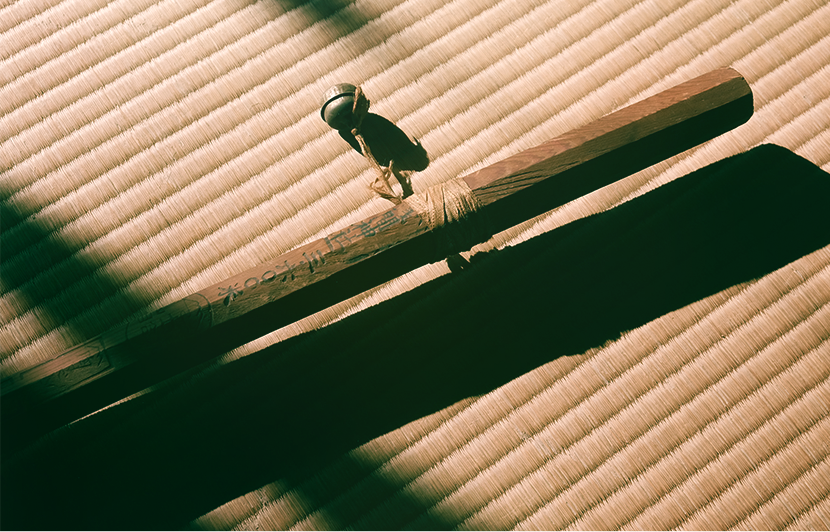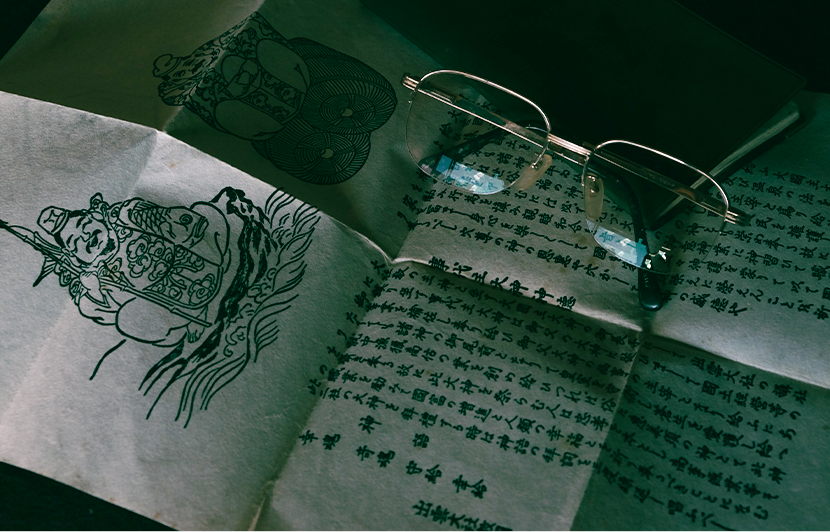
四万温泉の歴史
About Shima Onsen
History of Shima-Onsen
湯けむりの奥、時をこえて、四万。
山深く、湯けむり立ちのぼるこの地には、千年の時を超えて受け継がれてきた物語があります。
「四万(よんまん)の病を癒す霊泉」と伝えられた湯。
人は湯に癒やされ、何かに導かれ、またこの地へ戻ってきます。
山の奥から湧きつづける不思議な力に、身をゆだねてみてください。
Deep in the mountains, where steam rises quietly from the earth,
a story has been passed down for over a thousand years.
This is the sacred spring said to heal forty thousand illnesses.
People come here to be healed by the waters,
guided by the divine, and find themselves returning again.
Surrender yourself to the mysterious power that has been flowing from deep
within the mountains since ancient times.

開湯伝説
四万温泉は、古くから「山の湯」として、近隣に暮らす人々に親しまれてきました。その名の由来は、延暦年間(782〜806年)、源頼光の家臣であった碓氷貞光が、夢の中で童子に「この湯は四万(よんまん)の病に霊験あらたかである」と告げられたことに始まると伝えられています。
The Founding Legend of Shima Onsen
Shima Onsen has long been cherished as a hot spring deep in the mountains, beloved by the people living in the surrounding areas.
The name Shima (四万) literally means “forty thousand,” and its origin is said to date back to the Enryaku era (782–806), when Sadamitsu Usui a retainer of the famed warrior Minamoto no Yorimitsu, received a divine message in a dream from a celestial child, who told him:“This spring holds miraculous powers to heal forty thousand illnesses.”

四万温泉と山岳信仰
四万温泉の奥に鎮座する新潟県境の山「稲包山」は、古くからこの地の人々に、田や水を司る神として祀られてきました。湯がこの地に湧いたこともまた、稲つつみの神の恵みと信じられてきました。山頂の稲包神社には、修験道のご本尊・蔵王権現も祀られ、この四万の地が、山を仰ぎ、祈る心と深く結ばれていたことがうかがえます。
人々が祈り、手を合わせたその記憶は、いまも山の静けさのなかに、かすかに宿っているようです。
Shima Onsen and Mountain Worship
Mount Inatsutsumi, which rises quietly at the border between Gunma and Niigata, deep in the mountains behind Shima Onsen,
has long been worshipped by the people of this region as a guardian of rice fields and water. It is believed that the hot spring itself is a gift from this mountain deity. At the summit stands Inatsutsumi Shrine, where Zaō Gongen, a central figure in the mountain ascetic tradition of Shugendō, is also enshrined. This tells us that Shima was once deeply connected to mountain worship and prayer. The quiet memory of those who once offered their prayers still seems to dwell in the stillness of the mountain.

日向見薬師堂(ひなたみやくしどう)
四万温泉の日向見地区にある日向見薬師堂は、室町の時代より人々を見守り、今も国の重要文化財として大切に受け継がれています。
祀られているのは、湯前明神。
その本地仏は、病を癒す仏、薬師如来。
湯に浸かり、心と体を整える「湯治」の営みとも深く結びついた、癒しの祈りが息づいています。
Hinatami Yakushi-dō (Buddhist Hall of Yakushi)
In the Hinatami district of Shima Onsen stands the Hinatami Yakushidō, a sacred hall that has quietly watched over the people since the Muromachi period, and is still lovingly preserved today as an Important Cultural Property of Japan.
Enshrined here is Yunomae Myōjin, whose true form is Yakushi Nyorai, the Buddha of healing and recovery.
The gentle prayers of healing that dwell in this place are deeply connected to toji—the ancient practice of soaking in hot springs to restore both body and spirit.

柏原家口伝
中之条町誌によれば、戦国時代以前から、下沢渡には「柏原大蔵院」という修験の寺院があり、1794年の古文書にもその名が記されています。
同誌からは、当時の修験者たちが知識階級であると同時に、諜報活動にも関わっていたことがうかがえます。
武将たちに仕える諜報者、いわゆる忍者の起源は、山伏や修験者にあるとされており、柏原大蔵院の修験たちも、そうした忍びの世界とどこかでつながっていたのかもしれません。
そんな想像が静かに広がります。
The Oral Tradition of the Kashiwabara Family
kusushiQui is run by the Kashiwabara family, who have lived in Shima Onsen for generations.
According to the Nakanojō Town Chronicle, the sacred site known as Kashiwabara Dazō-in, a temple of mountain ascetics, has stood in Shimosawatari since before the Warring States period. Its name also appears in ancient documents dating back to 1794.
The chronicle suggests that these ascetics were not only part of the intellectual class of their time but were also involved in covert intelligence activities.
It is said that the origins of the ninja—spies who served the warlords—can be traced back to yamabushi and shugenja, mountain monks and ascetics.
One cannot help but wonder if the practitioners of Kashiwabara Dazō-in, too, shared some hidden connection to this secretive world.
Such imaginings quietly take root.
Reserve
宿泊予約
静けさ。光。香り。感触。
身をゆだねるほどに、
山との呼吸がきっと合うはず。
体験しにきてください、
宿る感覚が、目覚める感覚を。
Coming soon...
